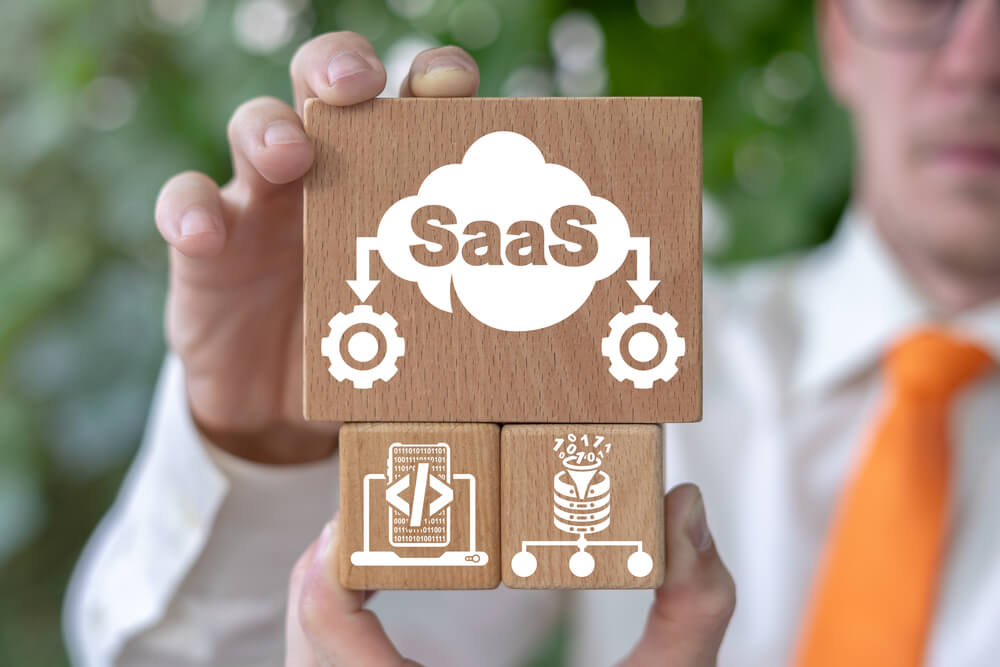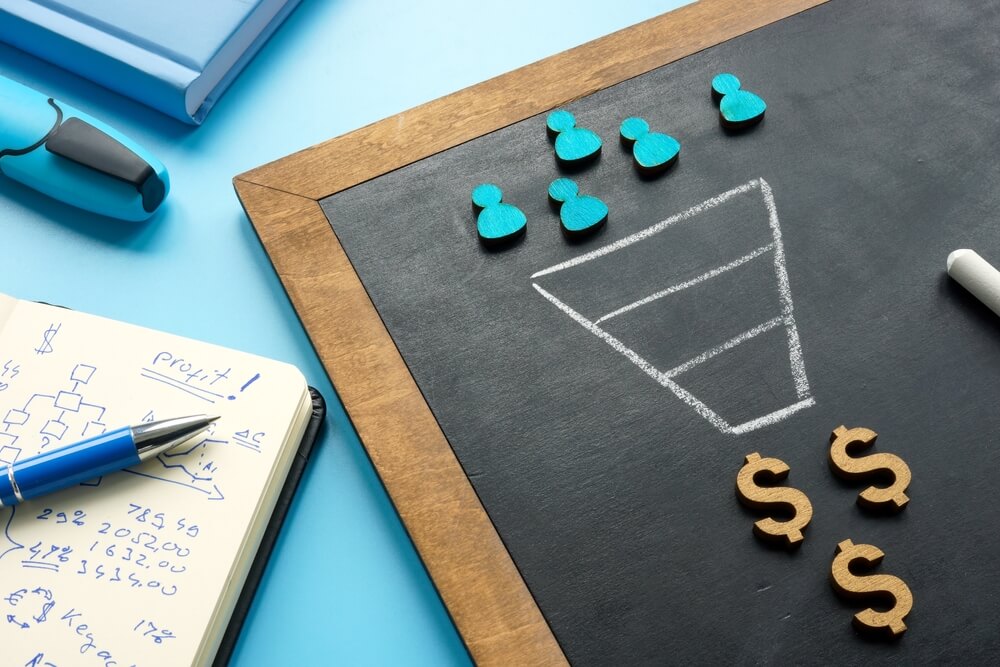
Build an Excellent SaaS Marketing Funnel and Watch Conversion Rise
An experienced software-as-a-service (SaaS) marketing agency knows its industry faces unique demand- and lead-generation challenges compared to traditional software or ecommerce businesses. One strategy to address it is to customize the sales funnel according to the buyer’s journey to maximize conversion.
This article discusses creating a successful SaaS marketing funnel. It also tackles the following:
- How SaaS marketing funnels differ from others.
- Various SaaS customer journeys.
- Ideal types of content and marketing strategies at every sales funnel stage.
High-quality marketing funnels prepare SaaS companies for growth. Read below to learn more about how to develop one. Let’s go!
Want to know how we help SaaS businesses stand out from the crowd? Watch this video to learn how DAP makes it happen!
How SaaS Funnels Differ from Other Funnels
A sales funnel is a model depicting the stages that a potential customer goes through before buying. Typically, it features a wide mouth, representing many prospects entering the awareness stage. The funnel narrows as they move down toward a purchase.
It differs slightly for SaaS brands. For instance, the consideration stage sometimes includes proposals and evaluations. This happens for many reasons:
- A common SaaS revenue model is subscriptions. Buyers are more cautious about committing. They need time to evaluate the continuing value that the product provides.
- SaaS buyers purchase software access, not a physical product. They require more research because they cannot “touch or feel” a platform before making a purchase.
- SaaS subscriptions deeply affect business workflow. Buyers want to see how it integrates with existing tools and processes.
- Pricing models such as per user, or per month require determining the right number of seats to purchase.
- Many SaaS companies target B2B markets, which have several decision makers.
- The actual users sometimes differ from the platform or subscription customers.
Either way, the marketing and sales goal is to guide prospects through each stage and experience. The funnel enables companies to track conversion rates and optimize the process for improved results.
Kinds of SaaS Buyer Journeys
A good SaaS marketing agency helps you develop an efficient conversion plan that reduces the sales cycle, retains the right customers, and transforms them into brand advocates. It begins by defining your actual buyer’s journey.
SaaS buyer journeys vary significantly based on several factors. These include product complexity, target audience, and pricing. Here are some examples:
| Customer’s Journey | Characteristics | Pathway |
|---|---|---|
| Self-service | It is typically associated with low-cost, simple-to-use SaaS solutions. Users quickly understand the value with minimal touchpoints. | Visit website → Sign up for free or trial → Use and see value → Convert to paid → Self-serve for any additional needs |
| Transactional | These are straightforward solutions but might have multiple pricing tiers or add-on features. It might need customer interaction, especially for upsells. | Visit website → Sign up for free or trial → Initial usage → Engagement through educational content → Conversion → Upsell or cross-sell through emails or in-app prompts |
| Enterprise | These are high-cost, high-value solutions tailored for large businesses or enterprises. The decision-making process involves multiple stakeholders. The sales cycle is usually longer. | Awareness through high-level content → Request for a demo or contact sales → Personalized presentation → Custom proposal → Negotiation → Purchase → Onboarding and continuous support |
| Consultative | These SaaS solutions often address niche problems or industries. They also require a consultative sales approach to explain the value proposition. | Awareness through specialized content → Attend webinars or workshops → Schedule consultation → Personalized solution mapping → Purchase → Regular check-ins and support |
| Committee decision | This customer’s journey usually refers to mid- to large-sized organizations where a committee or a group of stakeholders makes the buying decision. Each member might have different evaluation criteria. | Solution discovery by independent teams → Internal discussions → Group demo or trial → Consolidated feedback → Purchase decision → Onboarding tailored to different user roles |
Mapping out these journeys helps you better understand your market’s unique needs at every stage. You are now more capable of optimizing each more effectively.
Five Steps in Developing a SaaS Marketing Funnel

A typical buyer’s journey has these marketing funnel stages:
- Awareness
- Interest
- Consideration
- Conversion
- Retention and advocacy
Let us discuss each below.
1. Awareness Stage
Mastering the awareness stage is one of the most powerful SaaS inbound marketing strategies. This is when your target audience first encounters your product or service. You also should learn to overcome the many challenges that come with it.
- Prospects know they have a problem but are unaware that you have the solution.
- You have limited prospect interaction, considering the intense competition online.
- Your brand has a nonexistent relationship with prospects. They have little trust in you at this point.
Two ideal awareness-stage strategies are (1) search engine optimization (SEO) to increase organic brand awareness and (2) free education to improve your credibility and reduce mistrust.
Here is what it might look like for those on the self-service journey:
- Design the landing pages to clearly highlight user benefits and value.
- Use testimonials, customer reviews, and case studies to build credibility and social proof.
- Provide in-app tutorials, walkthroughs, and tips to enhance the user experience.
- Minimize required user actions and decisions to get set up. Automate and pre-populate information where possible.
- Make upgrading to paid plans and referrals easy from within the application.
2. Interest Stage
Engagement ramps up during the interest stage. Users are more aware of the brand but need more information and exposure before you can push them deeper into the funnel.
A SaaS marketing agency takes advantage of this stage by capturing prospects through lead magnets. These are special and gated types of content that a business offers in exchange for something valuable from the users. Common examples are emails, names, and phone numbers.
These lead magnets range from ebooks to free trials, discounts, vouchers or coupons, and downloadable tools, such as checklists and templates. More SaaS brands also leverage chatbots as cheap lead-generation tools.
These lead magnets help you build a prospect list, which the sales team can use to qualify and score. They also let you nurture leads with follow-up content and offers until they are ready for conversion.
3. Consideration Stage
The consideration stage is when prospects believe your product is valuable, but so do your competitors. The keyword here is “extensive evaluation.”
Prospects determine how your product fits their needs. They look at product demos, free trials, pricing, and detailed comparisons. They create shortlists and undergo lengthy decision making involving multiple stakeholders.
Additionally, the leads conduct proof of concepts or pilots to test products hands-on before fully committing. They also heavily negotiate contracts, especially about pricing and value-added services.
Your team works closely with a SaaS marketing agency and sales departments to do the following:
- Submit proposals, quotes, and customized consultations to address the prospect’s specific use cases and questions.
- Communicate extensively through calls, emails, and in-person meetings to build relationships and address concerns.
- Provide detailed content such as buyer’s guides, case studies, and competitive analyses to support the evaluation process.
- Facilitate customer referrals and peer discussions for social validation.
You might also need to customize the strategies according to the customer journey. For example, dedicated account executives work well with “consultative” buyers.
Overall, the consideration stage is hard work. It demands patience, data, and collaboration to position the brand as the best solution. However, when done right, persistence pays off. You can now push the leads to the conversion stage.
4. Conversion Stage
The conversion stage has only one objective: to convert prospects into customers with a smooth, convenient, frictionless signup or buying process.
Here are some ideas:
- Provide a short, intuitive signup flow requiring only essential information.
- Allow signups with various options: self-service, sales-assisted, chatbot signups, and more.
- Offer multiple payment options and regions.
- Send welcome emails introducing key features and resources.
- Provide contact information for support.
- Set up automatic guided tours and in-product hints pointing users to key workflow.
- Seek immediate feedback on the signup experience via surveys or net promoter score questions. Identify areas for improvement.
- Make it easy to upgrade plans or purchase add-ons once signed up.
The ideal conversion rates vary across SaaS industries. Aim for 3% and above.
5. Retention and Advocacy
As mentioned, many SaaS businesses live for retention and advocacy. It relies on ongoing renewals and expanded use to drive recurring revenue. The ideal retention rate is 90% to 95%. Anything below, and your business is susceptible to losing money.
How do you retain customers and even transform them into brand ambassadors? It depends on many factors, such as their journey and niche. These ideas are excellent for B2B and enterprise markets:
- Assign dedicated account managers to provide high-touch, consultative support.
- Conduct regular business reviews to assess needs, identify expansion opportunities, and get executive feedback.
- Provide service-level agreements to guarantee uptime, response times, and technical support coverage.
- Develop executive briefing programs with product roadmaps and strategy sessions.
- Offer incentives for contract renewals and expanded use, such as discounts.
- Provide hands-on training and workshops tailored to different user groups.
- Request executives act as references for similar accounts.
- Co-create content highlighting success stories and outcomes for publication.
- Leverage their brand name as a case study and social proof for other enterprise deals.
Nurturing enterprise relationships requires high-touch, customized retention programs. Advocacy relies on leveraging their reputation and brand reach.
Summing Up
Optimizing the SaaS marketing funnel effectively increases conversion and retention. It matches the buyer’s journey and helps leads overcome objections and questions. Most of all, it makes them feel more secure with their buying decisions.
This article covers impactful tactics to improve every funnel stage. It also touches on customer journeys to help you develop more accurate personas and customize strategies.
If you need more help, contact Digital Authority Partners (DAP) to schedule a free consultation.
Want To Meet Our Expert Team?
Book a meeting directly here




